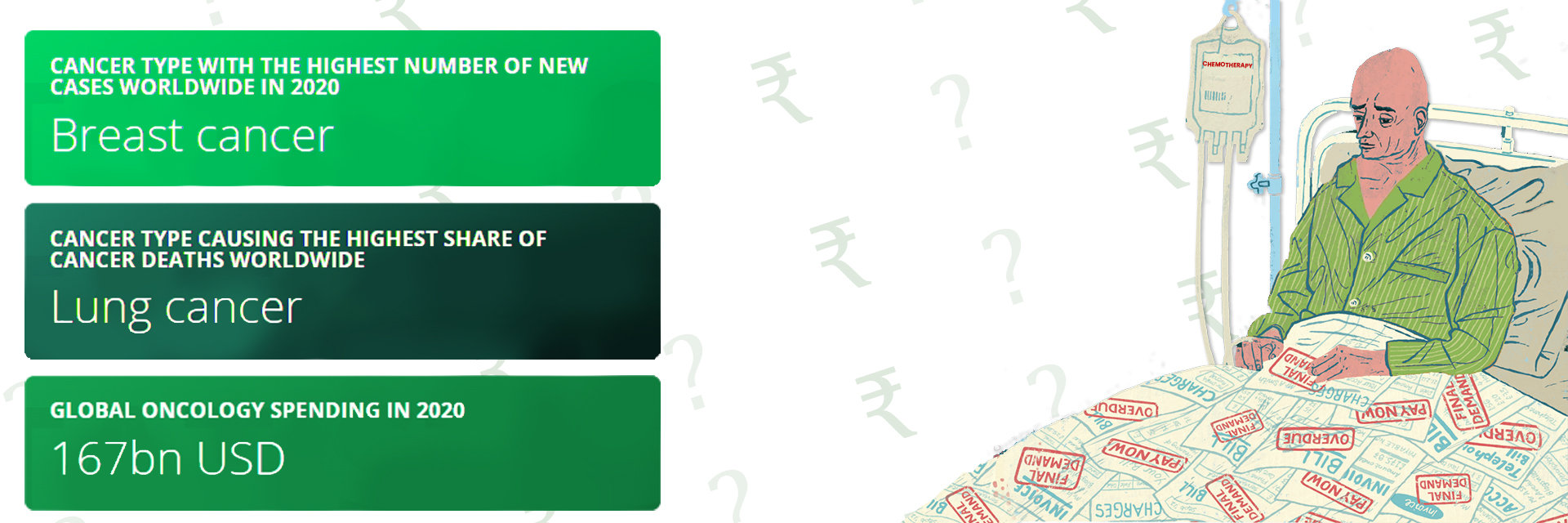Proton therapy is emerging as one of the most advanced forms of cancer treatment, and its application for rectal cancer has gained significant attention in recent years. Rectal cancer, a type of colorectal cancer, affects the lower part of the large intestine, where the rectum connects to the anus. With more than 40,000 new cases of rectal cancer diagnosed in India annually, the need for effective and less damaging treatments is crucial.
Proton therapy, a precise form of radiation, offers promising outcomes, especially for patients with rectal cancer.
Proton therapy for rectal cancer uses a highly focused beam of protons to destroy cancer cells while minimizing damage to surrounding healthy tissues. This precision makes it particularly effective for cancers in sensitive areas, such as the rectum, where nearby organs like the bladder and reproductive organs are at risk. In this blog, we will explore the science behind proton therapy, its application for rectal cancer, and its advantages over traditional treatments.
Let’s dive deeper into what makes proton therapy so unique.
Proton therapy is a type of radiation therapy that uses protons instead of X-rays to treat cancer. Protons are positively charged particles that can be precisely targeted to tumors. Unlike traditional radiation, where the energy is absorbed throughout the path of the beam, proton therapy delivers its maximum energy directly to the tumor site, minimizing exposure to surrounding healthy tissues.
For rectal cancer patients, this means a more localized and effective treatment that reduces side effects such as damage to the bladder, reproductive organs, and other nearby structures. Proton therapy also holds promise for reducing long-term complications, such as bowel dysfunction and infertility, which are common concerns with standard radiation therapy.
So, why should you consider proton therapy over other treatments?
Why Consider Proton Therapy for Rectal Cancer?
Proton therapy for rectal cancer is a newer option, and its benefits are becoming more apparent with ongoing research. Here are the primary reasons why this treatment is considered effective:
- Precision in Targeting Tumors: Proton therapy allows oncologists to precisely target cancer cells while sparing nearby healthy tissues. This is especially important for rectal cancer because it is near the bladder and reproductive organs.
- Lower Risk of Long-Term Side Effects: Traditional radiation therapy can lead to long-term side effects, including bowel problems, bladder issues, and infertility. Proton therapy reduces the risk of these complications.
- Improved Quality of Life: By minimizing damage to healthy tissues, patients undergoing proton therapy often experience a better quality of life post-treatment, with fewer side effects during and after treatment.
- Ideal for Complex Cases: Proton therapy is particularly suitable for cases where the tumor is located near sensitive structures or has recurred after previous treatments.
If you are looking for a treatment that offers precision and minimizes side effects, consider proton therapy. Book an appointment with the best oncologists in India today!
Proton Therapy vs. Traditional Radiation for Rectal Cancer
While both proton therapy and traditional X-ray radiation aim to kill cancer cells, the way they deliver radiation is different. In traditional radiation, X-rays pass through the body, depositing energy in and out of the target area. This can lead to more damage to healthy tissues around the tumor.
In contrast, proton therapy delivers a focused dose of radiation directly to the tumor, stopping once it reaches the cancerous cells. This reduces the exposure of surrounding tissues to radiation, which is especially beneficial for patients with rectal cancer, as the rectum is located near critical organs.
| Treatment Type | Traditional Radiation | Proton Therapy |
| Precision | Less precise, affecting surrounding tissues | Highly targeted to tumor |
| Side Effects | Higher risk of bladder, bowel, and reproductive damage | Reduced risk of long-term side effects |
| Ideal for | Most cases of rectal cancer | Complex cases or those with recurrence |
Interested in learning how proton therapy can improve your treatment outcomes? Speak with a cancer specialist to understand the best options for you.
How Does Proton Beam Therapy Work?
Proton beam therapy works by accelerating protons using a machine called a cyclotron or synchrotron. These protons are then directed toward the tumor at high speeds, delivering their energy precisely to the cancer cells. The key advantage of proton beam therapy is that it allows oncologists to control the depth at which the protons release their energy, making it ideal for tumors in sensitive areas like the rectum.
Once the protons reach the tumor, they release their maximum energy, damaging the DNA of cancer cells. Over time, this leads to the death of the cancer cells, allowing healthy tissues to recover more quickly than traditional radiation therapy.
Benefits of Proton Therapy for Rectal Cancer
Proton therapy offers a range of benefits that make it a preferred choice for many rectal cancer patients:
Proton therapy could be the key to a better quality of life after cancer treatment. Schedule a consultation with leading cancer centers in India today!
Side Effects of Proton Therapy for Rectal Cancer
While proton therapy reduces the risk of long-term complications, it is not without side effects. Some of the common short-term side effects include:
- Fatigue: Many patients feel tired after treatment sessions.
- Skin Irritation: Mild skin irritation may occur in the area where the radiation is delivered.
- Digestive Issues: Some patients may experience temporary bowel issues like diarrhea.
Long-term side effects are significantly reduced compared to traditional radiation but can still include:
- Bowel or bladder dysfunction
- Fertility issues
However, studies show that these long-term effects are less frequent and less severe in patients receiving proton therapy compared to those undergoing traditional radiation.
Looking for treatment options? Here’s where you can find proton therapy in India.
Where Can You Get Proton Therapy for Rectal Cancer in India?
India is home to several world-class cancer treatment centers that offer proton therapy for rectal cancer. Some of the leading hospitals include:
1. Apollo Proton Cancer Centre, Chennai: Apollo Proton Cancer Centre in Chennai is India’s first proton therapy center and offers cutting-edge treatment for various cancers, including rectal cancer. The center is equipped with state-of-the-art technology, providing personalized proton therapy plans for patients.
2. Tata Memorial Hospital, Mumbai: Tata Memorial Hospital, a renowned cancer treatment center in India, also provides proton therapy. Known for its comprehensive approach to cancer care, the hospital offers both diagnosis and advanced treatments, including proton therapy for colorectal cancers.
3. HCG Cancer Centre, Bengaluru: HCG Cancer Centre is a well-known hospital for cancer treatment, and it has facilities for proton therapy. The center specializes in various forms of cancer treatment, including rectal and colorectal cancers, ensuring precise and patient-centered care.
4. AIIMS, Delhi: The All India Institute of Medical Sciences (AIIMS) in Delhi offers cutting-edge treatment options, including proton therapy for rectal cancer. AIIMS is known for its high-quality care and affordable treatments, making it accessible to patients across India.
These centers provide advanced proton therapy treatments, combining high-quality medical care with innovative technology. Patients considering proton therapy can consult oncologists at these hospitals to determine the right treatment for their specific condition.
Cost of Proton Therapy for Rectal Cancer in India
The cost of proton therapy for rectal cancer in India varies depending on the hospital, location, and the complexity of the treatment. On average, the cost ranges between INR 20 lakhs to INR 30 lakhs for a full course of proton therapy treatment. Several factors contribute to the overall cost, including:
- Hospital Charges: The type of hospital, its location, and its proton therapy facilities play a significant role in determining the cost. Leading hospitals with specialized proton therapy centers may charge more due to advanced technology and infrastructure.
- Stage of Cancer: The stage of rectal cancer at the time of diagnosis impacts the duration and intensity of treatment. More advanced cancers may require a longer course of proton therapy, thereby increasing the cost.
- Additional Treatments: Patients may require supplementary treatments, such as chemotherapy, immunotherapy, and proton therapy, which can increase the cost.
- Insurance Coverage: In India, some insurance companies cover part of the cost of proton therapy. It is important to check with your insurance provider to understand the extent of coverage and out-of-pocket expenses.
Though proton therapy is more expensive than traditional radiation therapy, its potential to reduce long-term side effects and improve outcomes may make it a cost-effective option for many patients in the long run.
Worried about the cost? Many hospitals offer financing options or work with insurance providers to make proton therapy more accessible. Contact a specialist to discuss your treatment and financial options.






